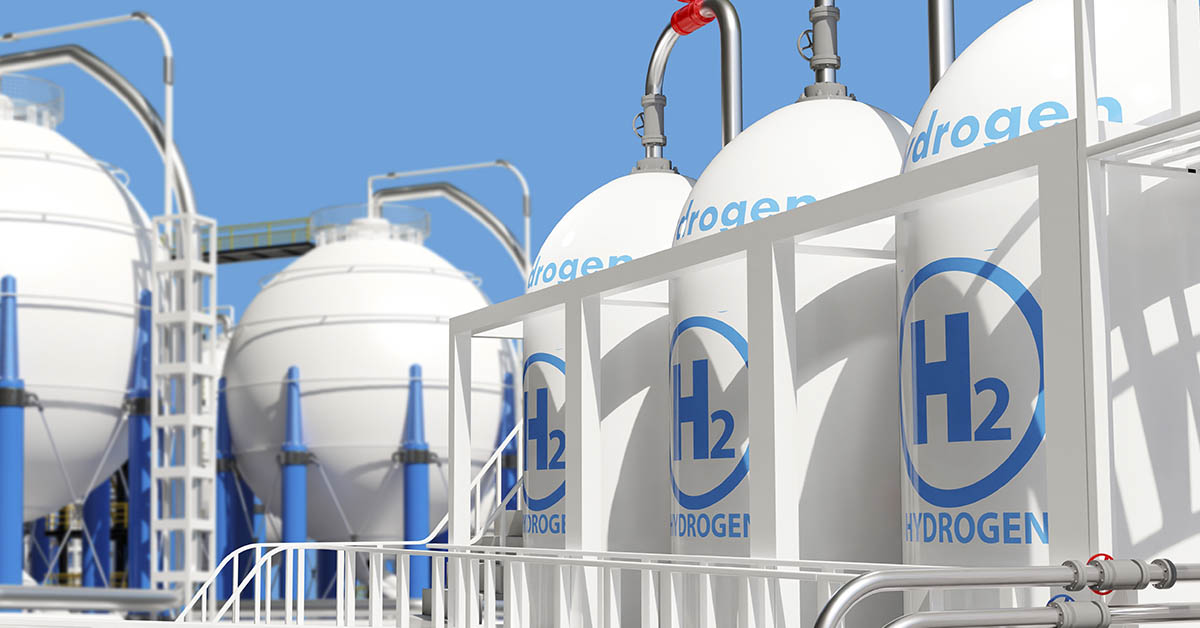Scientists have discussed using hydrogen as a possible green energy source for centuries. As climate change ravages the planet scientists are in desperate need of alternative, renewable sources of energy. According to the World Economic Forum, 0.1% of all the world’s hydrogen is currently considered “green”. With all the pressure to switch to renewal energies increasing, scientists are trying a simple tactic to meet demands: finding naturally existing hydrogen.
A recent study by researchers from the University of Oxford, Durham University, and the University of Toronto has unearthed an incredible discovery. According to their estimates, Earth’s continental crust holds enough naturally occurring hydrogen to power modern society for 170 000 years.
Published in Nature Reviews Earth & Environment, this discovery could change the future of clean energy. However, researchers still need to find readily available and usable hydrogen. Although some hydrogen may be lost or inaccessible, scientists estimate that thousands of years of potential energy remain within the Earth.
Locating and Preserving Clean Hydrogen

Scientists have developed a detailed “exploration recipe” to identify where natural, clean hydrogen can be found and economically extracted. Their approach uses geology, chemistry, and biology to identify the best possible underground hydrogen reserves for commercial extraction. The main ingredients are the presence of hydrogen and suitable reservoir rocks. A reliable geologic seal traps the gas and prevents it from escaping into the atmosphere.
Read More: Newly Discovered ‘Limitless’ Energy Source Could Fuel a Country for 60,000 Years
How Natural Hydrogen Forms and Accumulates Underground

The process begins with understanding how clean hydrogen is made. Water reacts with iron-rich rocks deep underground, releasing hydrogen gas in a process known as serpentinization. At temperatures between 302°F – 752°F the process emits hydrogen gas. Once formed, hydrogen travels through porous and fractured rocks. If it encounters a layer it cannot pass through, such as shale or salt, the gas becomes trapped and cannot escape past this barrier. Over time, it builds up and forms a potential reservoir for future extraction.
Microbial Impact on Underground Hydrogen

However, the recipe doesn’t stop at finding where clean hydrogen is stored. Scientists also track what can deplete these reserves. Microbes living underground can consume hydrogen, sometimes altering the gas mixture and reducing the amount available for extraction. This microbial activity can also produce other gases, such as methane or hydrogen sulfide, which may complicate extraction and contaminate clean hydrogen. “Avoiding environments that bring them into contact with the hydrogen is important in preserving hydrogen in economic accumulations”. Barbara Sherwood Lollar, co-author of the study from University of Toronto stated in a press release.
Read More: New Energy-Generating Cement Could Turn Buildings into Power Plants
A New Frontier for Clean Hydrogen

Kansas has emerged as an area of interest to scientists in their search for clean hydrogen. The state sits atop an ancient mid-continental rift, formed billions of years ago, rich in iron-bearing rocks. These rocks react with water deep underground, generating hydrogen gas through natural processes. Recent discoveries have confirmed the presence of high-concentration hydrogen reservoirs in this region, sparking interest from energy companies and researchers.
Hydrogen Discoveries and Industry Development in Kansas

The Sue Duroche 3 well in northeastern Kansas recently recorded hydrogen levels as high as 96% in air-corrected mud gas samples. Companies like PureWave Hydrogen and Koloma are now mapping the area and conducting technical modeling to identify the most promising extraction sites. Their efforts could lead to the development of a new clean hydrogen industry in North America.
Scientists have discovered vast natural hydrogen reserves in locations beyond Kansas around the world. In early 2024, scientists reported the largest known hydrogen reserve in Albania’s Bulqizë mine. There, at least 200 tons of hydrogen escape annually. Dubbed the “hydrogen jacuzzi”, it forms bubbling pools of nearly pure gas within the mine.
Read More: New Japanese Technology Can Turn Sunlight and Water Into Hydrogen Fuel
Parallel Paths in Resource Exploration

Clean hydrogen is not the only gas that researchers Chris Ballentine and John Gluyas have their attention on. Ballentine and fellow co-author John Gluyas from Durham University published a paper in 2023 on how to find hidden helium reserves. Helium is an essential gas for cooling superconductors, operating MRI machines, and supporting space exploration. However, with global helium supplies dwindling, finding renewable and economically feasible hidden reserves has become essential to meet demands.
Ballentine’s and Gluyas’s approach adapts petroleum exploration principles to identify source rocks rich in uranium and thorium. These elements decay over billions of years, producing helium that accumulates in ancient, stable geological formations called cratons. The team’s work has already led to discoveries in places like the Rukwa Basin in Tanzania, where wells have revealed high concentrations of helium with minimal hydrocarbon contamination.
Yellowstone National Park in the United States has shown promise in having helium reserves. The park’s geothermal activity and billion-year-old rocks create ideal conditions for helium production and release. Studies suggest that up to 73 tons of helium escape annually from Yellowstone’s hot springs and vents. Researchers have identified similar conditions in India’s Bakreswar-Tantloi region and Tanzania’s Rukwa Rift, marking both as priority targets for further exploration.
Conclusion

The discovery of vast reserves of clean hydrogen within Earth’s crust could signal a transformative opportunity for the global energy landscape. Clean hydrogen offers a zero-emission, high-energy alternative to fossil fuels, with the potential to power industries, transportation, and homes for thousands of years.
Scientists and researchers remain invested in figuring out extraction, storage, and targeted exploration that can unlock these reserves. Embracing clean hydrogen will be vital for achieving a sustainable, low-carbon future and meeting the globe’s growing energy demands.
Read More: World’s First Hydrogen VTOL Jet Will Only Cost $500 To Refuel

